The Gear
We grew two plants in a 5’x5’ Secret Jardin DARKROOM with a 4’x4’ flood tray and 38 gallon reservoir.  The cotton seeds were germinated in Root Riot Starter Cubes and transplanted into 5” net pots filled with clay pebbles. The plants got off to a slow start which we eventually diagnosed as being due to cold water temperature in our nutrient reservoir. Sitting on a concrete slab in early May here in Zone 6a, the reservoir temperature wasn’t rising above the upper 50s. The addition of an Elemental Solutions H2O Titanium Heater with Digital Thermostat brought the water temps up and the plants exploded with new growth. For a plant native to tropical regions such as the southern USA, Africa, and India, you can imagine how these plants like the heat.
The cotton seeds were germinated in Root Riot Starter Cubes and transplanted into 5” net pots filled with clay pebbles. The plants got off to a slow start which we eventually diagnosed as being due to cold water temperature in our nutrient reservoir. Sitting on a concrete slab in early May here in Zone 6a, the reservoir temperature wasn’t rising above the upper 50s. The addition of an Elemental Solutions H2O Titanium Heater with Digital Thermostat brought the water temps up and the plants exploded with new growth. For a plant native to tropical regions such as the southern USA, Africa, and India, you can imagine how these plants like the heat.
The image of cotton fields along the highway baking under the hot Georgia sun comes to mind. To simulate these growing conditions, we employed a 1000 watt HPS lamp in a Predator 8” King Cobra reflector powered with a 1000 watt Sunspot ballast. Where this intensity in an enclosed 5’x5’ grow tent might stress other plants, the cotton soaked it all up right along with our General Hydroponics Flora Series nutrients.
Hydroponic Bud Progression
Once water temperatures were addressed and growth took off, we still knew we had a long grow ahead of us. Cotton is a 180 plant, meaning it takes a full six months to harvest! Even in a hydroponic system where we can generally achieve faster growth rates, these cotton plants seemed to take an eternity to go from flower to pod (or “squares” as they are called) to cotton as we recognize it.
Cotton is in the Malvaceae family. Note the resemblance to Hibiscus flowers.
Harvest & Yield
While cotton can yield up to 50 pounds per acre in traditional cultivation, we fell way behind that mark in our 25 square feet as anticipated. Again, that’s the great thing about growing: There’s always something new to grow! It’s estimated that a man’s dress shirt requires about 10 ounces of cotton, a pair of jeans about 24 ounces, and a diaper about 2.5 ounces. Our two plants yielded about 7.5 ounces of cotton, so we grew three quarters of a shirt!
Our yield could have been substantially greater had we not battled cold water temps and a whitefly infestation, both of which stunted growth and diminished total yield. We also could have invested more into the feeding program as we only used the base nutrients for fertilizer. The addition of a high phosphorous bloom booster such as Kool Bloom would have allowed the plant to assimilate much more plant mass into cotton. However, as is common practice in commercial agriculture, we chose to reduce our inputs and the cost of the grow for store display purposes.
Cutting our losses from the whitefly infestation after alternating treatments of Azamax, Take Down Garden Spray, and Whitefly Traps, we pulled the plants. Removing the seeds from the cotton fibers is an excruciatingly difficult process requiring the nimblest of manual dexterity. One can understand how Eli Whitney’s cotton gin revolutionized an entire industry for the better.
Commenting on the cotton harvest, Store Manager Roger Emmick says, “One thing we learned is how tall these plants grow. They were easily above my head, though of course the plants were raised due to the reservoir and flood table. Toward the end I had to top the plants because they just wanted to continue growing up into the King Cobra. Something I also noticed is that when pulling down the display, there were several pods that didn’t open because they were not ready to do so. I picked these pods and decided to hold onto them for several weeks to see what would happen. I found that after about two weeks, all of these pods opened allowing you to pick the cotton. If attempting to pick the cotton before the pods opened, the cotton was of a different consistency and probably not useable for spinning purposes.”
We are currently beginning a second cotton grow using seeds from our first harvest. This grow will be in soil, and we are excited to document the differences. Stay tuned for more Goldleaf Grow Ops!
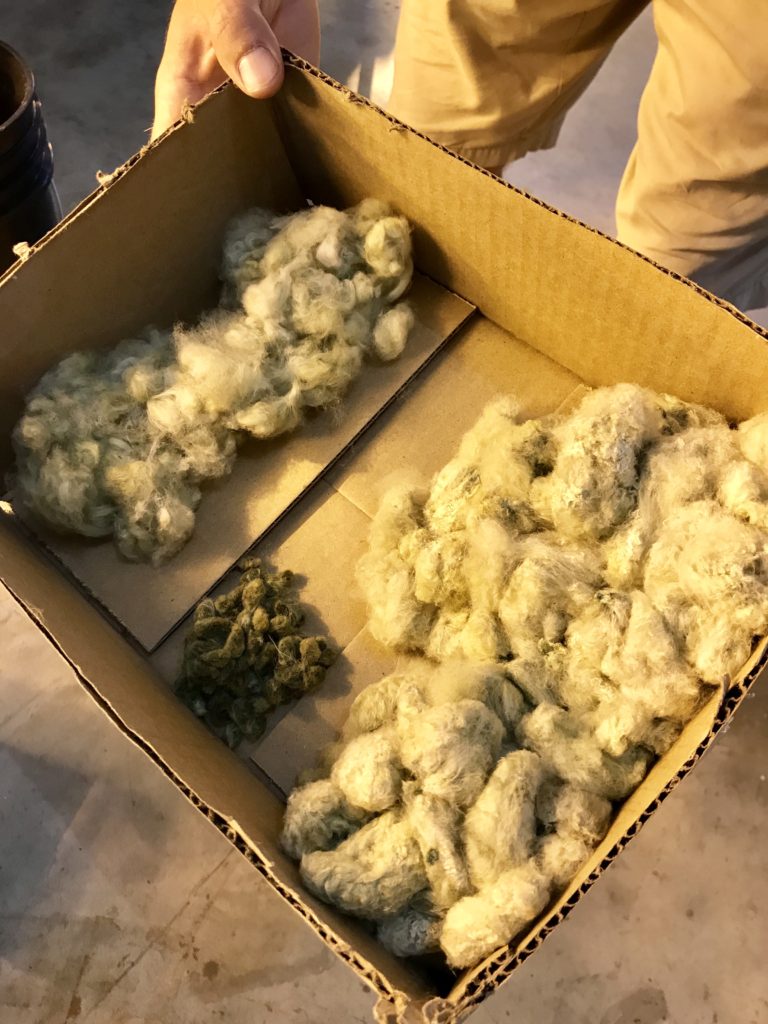

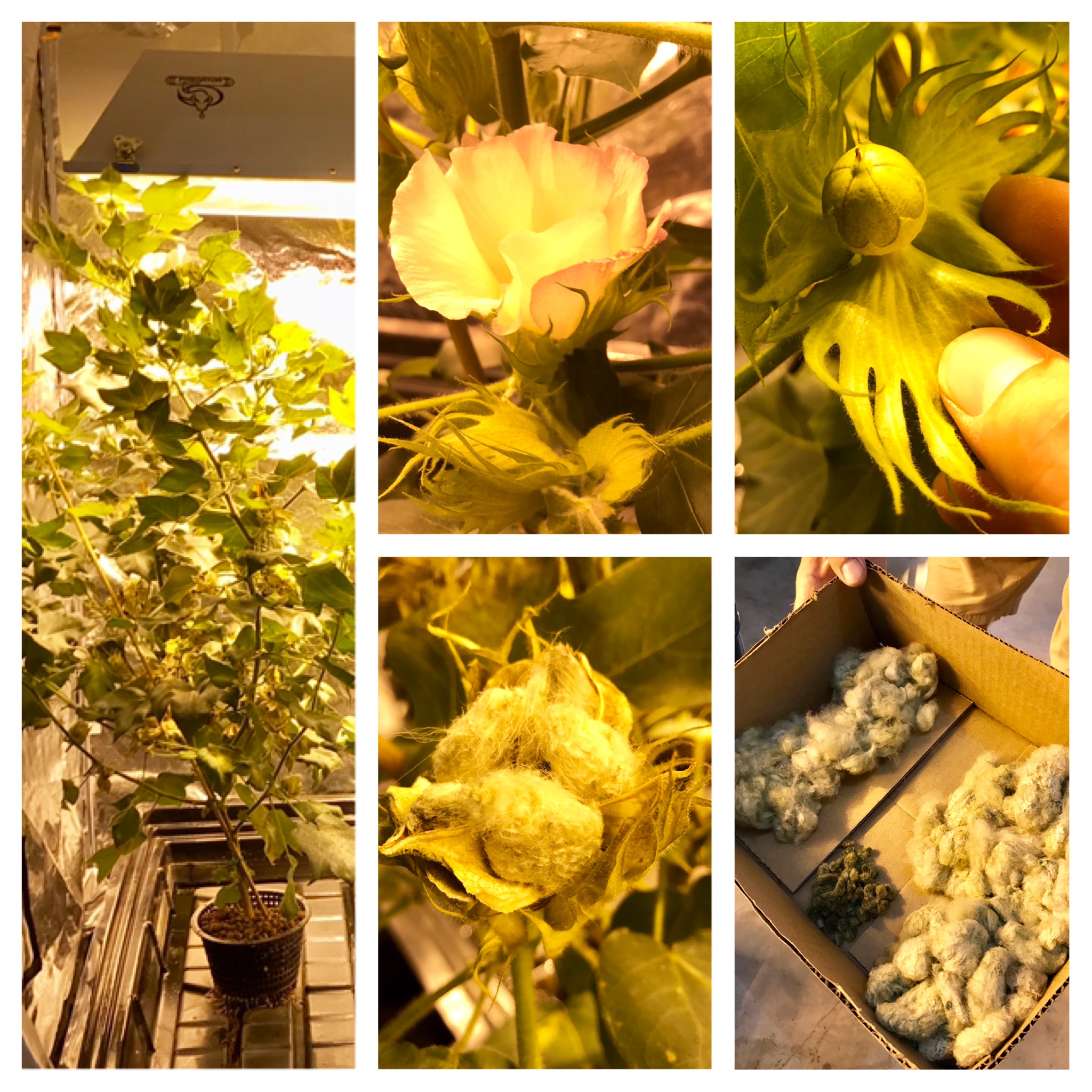
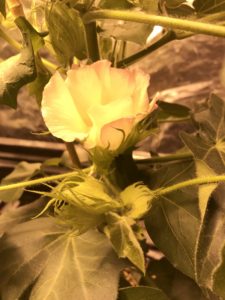
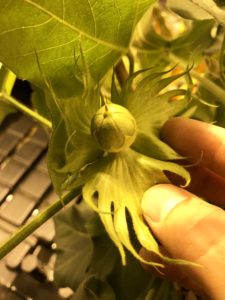
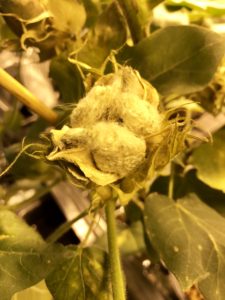
Just curious, what is your light cycle? Do you do 18/6 at first and switch to 12/12 at any time, or do you just leave the light on 24 hours a day the entire time? Let me know. I am very curious.
Thanks for your question! We start our seeds on 18/6, and that’s the light cycle we use for vegetative growth too. Once we see that the flowering or fruiting process is beginning, we switch to 12/12.
We’re happy to chat about any other questions you may have. Feel free to follow us on Facebook, Instagram, and join our Growers Group to learn more about what we’re up to. Happy growing!